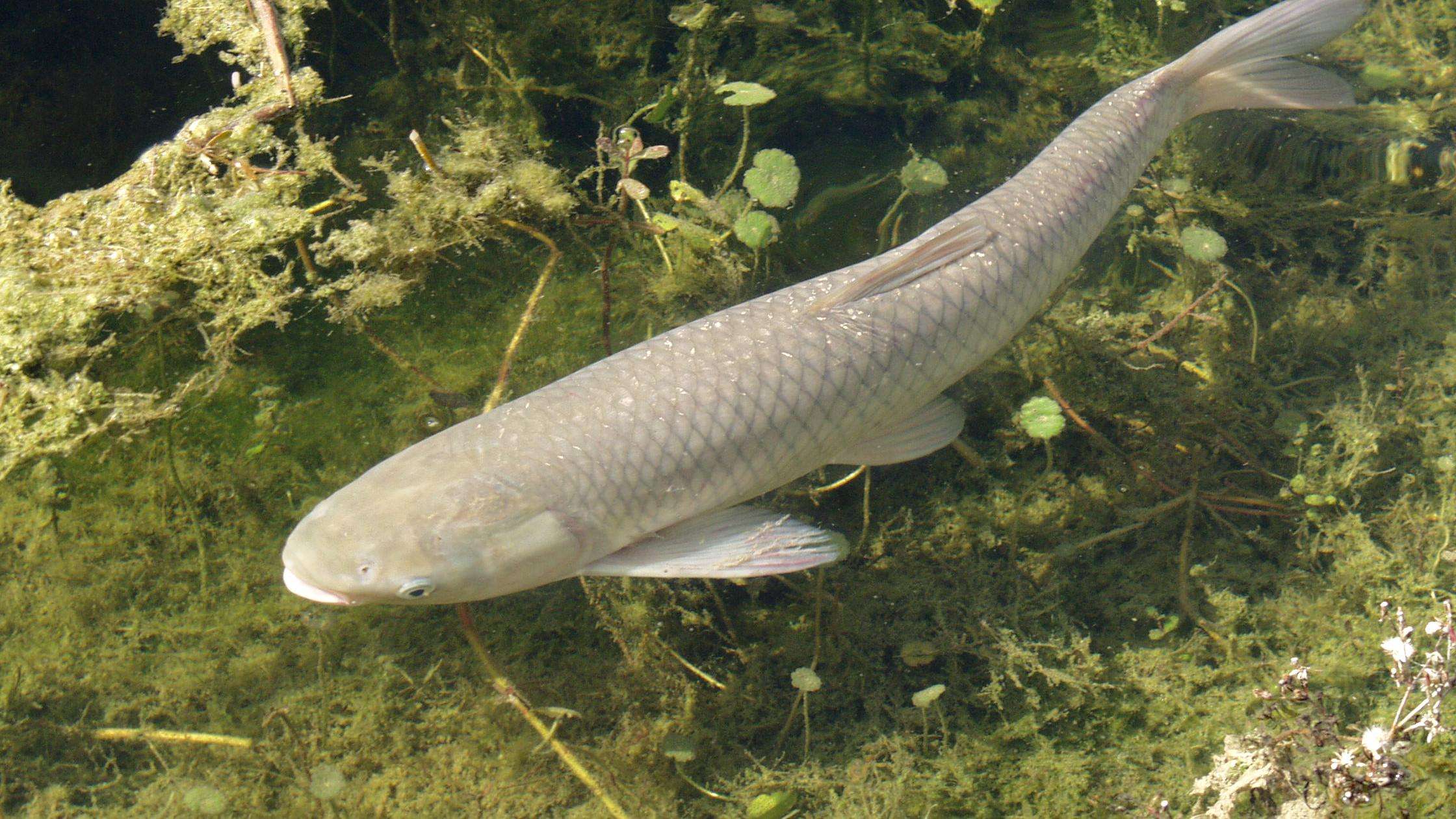Spring Viremia of Carp Virus

Spring viremia of carp (SVC) is a viral disease of fish that primarily affects cyprinid species such as carp. It is caused by the virus Rhabdovirus carpio. Water temperature affects the development of the disease. Outbreaks are most common in the spring as temperatures rise. SVC may present as an acute and highly contagious disease that can cause substantial economic losses. Mortality rates in infected fish range from 30 to 90 percent.
While not considered widespread in the United States, SVC is an internationally notifiable disease. APHIS follows World Organisation for Animal Health guidance on reporting all confirmed cases of this disease.
Fish can carry the SVC virus with or without symptoms. When they do show symptoms, you may see one or more of the following:
- Abdominal distension
- Exophthalmia (bulging eyeballs)
- Inflammation of the vent (often with trailing mucoid fecal casts)
- Petechial hemorrhages (look like red or purple spots) of the skin, gills, and eyes
- Darkened body with pale gills
- Gathering at water inlet or sides of pond
- Swimming and breathing slowly
- Reacting slowly to stimuli
- Loss of equilibrium in later stages
Common carp are the most susceptible to SVC. Young fish (up to a year old) are most likely to be affected, but the illness also occurs in older fish.
The SVC virus is shed mainly in the feces and urine, as well as the gills and skin mucus of infected fish. It usually spreads between fish either by direct contact or through the water.
Biosecurity Helps Prevent SVC From Spreading
If you're a producer, here's what you can do:
- Use spring or well water.
- Purchase fish from sources that test negative for SVC virus.
- Treat fish eggs with iodophore (disinfectant).
- Regularly disinfect ponds and farm equipment.
- Dispose of dead fish safely, per State regulations for livestock disposal.
- Reduce fish density in winter and early spring.
- Increase water temperature to at least 66–68 °F.
If you're a hobbyist who shows fish, only participate in events where each participant’s fish are kept in separate tanks.
If you're an angler, avoid transferring fish or fish parts between bodies of water.
Trade Restrictions Protect U.S. Fish Health
APHIS restricts the import of live fish, fertilized eggs, and gametes from SVC-susceptible species. These include common carp, koi, grass carp, silver carp, bighead carp, Crucian carp, goldfish, tench, and sheatfish. Learn more about our trade restrictions.
There is no treatment for SVC. Once the SVC virus is established in a pond, it can be difficult to eradicate unless all aquatic life at the site is destroyed.
Testing
If SVC is suspected or detected at a laboratory, the detection should be confirmed at the National Veterinary Services Laboratories in Ames, IA.
Report Signs of Animal Disease
Producers or owners who suspect an animal disease should contact their veterinarian to evaluate the animal or herd. Find an accredited veterinarian.
Animal health professionals (veterinarians; diagnostic laboratories; public health, zoo, or wildlife personnel; and others) report diagnosed or suspected cases of nationally listed reportable animal diseases to APHIS District Offices and to the State animal health official as applicable under State reporting regulations.

